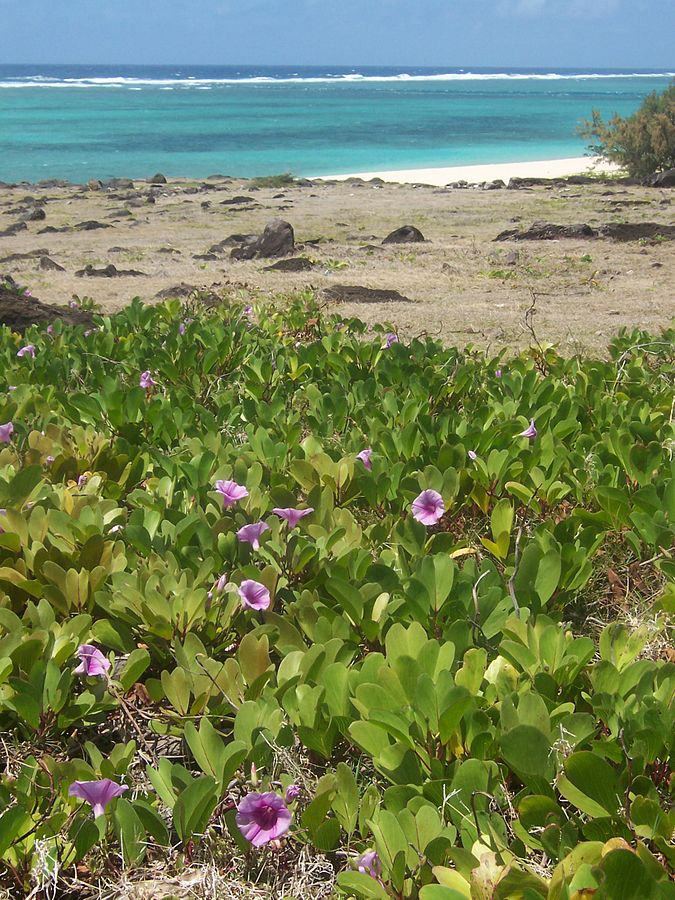
This evergreen, creeping, perennial vine is native to tropical and subtropical coastal areas around the world, especially on upper beaches and dunes. The plant grows 6-16″ high and has a trailing stem that quickly grows up to 100′ long. The dark green leathery leaves are usually deeply notched and are thought to resemble the hoof of a goat. A pair of nectar-producing glands at the juncture of the leaf blade and petiole attracts ants that ward off insects. Leaves and stems contain a white sap that may protect plants from pests. Clusters of funnel-shaped flowers appear from spring to fall and have pale pink to lavender to reddish purple petals with a darker rose-purple throat. Like other morning glories, the flowers last only one day, opening in the morning on sunny days and closing by early afternoon. On shady days they may open and close later in the day. Goat’s foot is tolerant of lean soil, drought, heat, salt spray, wind, and occasionally inundations of salt water so is an excellent choice for beach stabilization and dune restoration, as well as for use as a ground cover in seaside, pollinator and native plant gardens. Other common names for goat’s foot are bayhops, beach morning glory, seaside yam and railroad vine.
Type: Evergreen herbaceous perennial vine
Height: 6-16″ H x Up to 100′ length
Bloom Color: Pale pink to reddish purple with darker center
Bloom Time: Spring to fall
Light: Full sun
Soil: Sandy, lean, dry to medium moist, well-drained; drought tolerant; tolerates occasional salt water inundations
USDA Hardiness Zones: 9-11
Photo Credit B.navez Wikimedia Commons